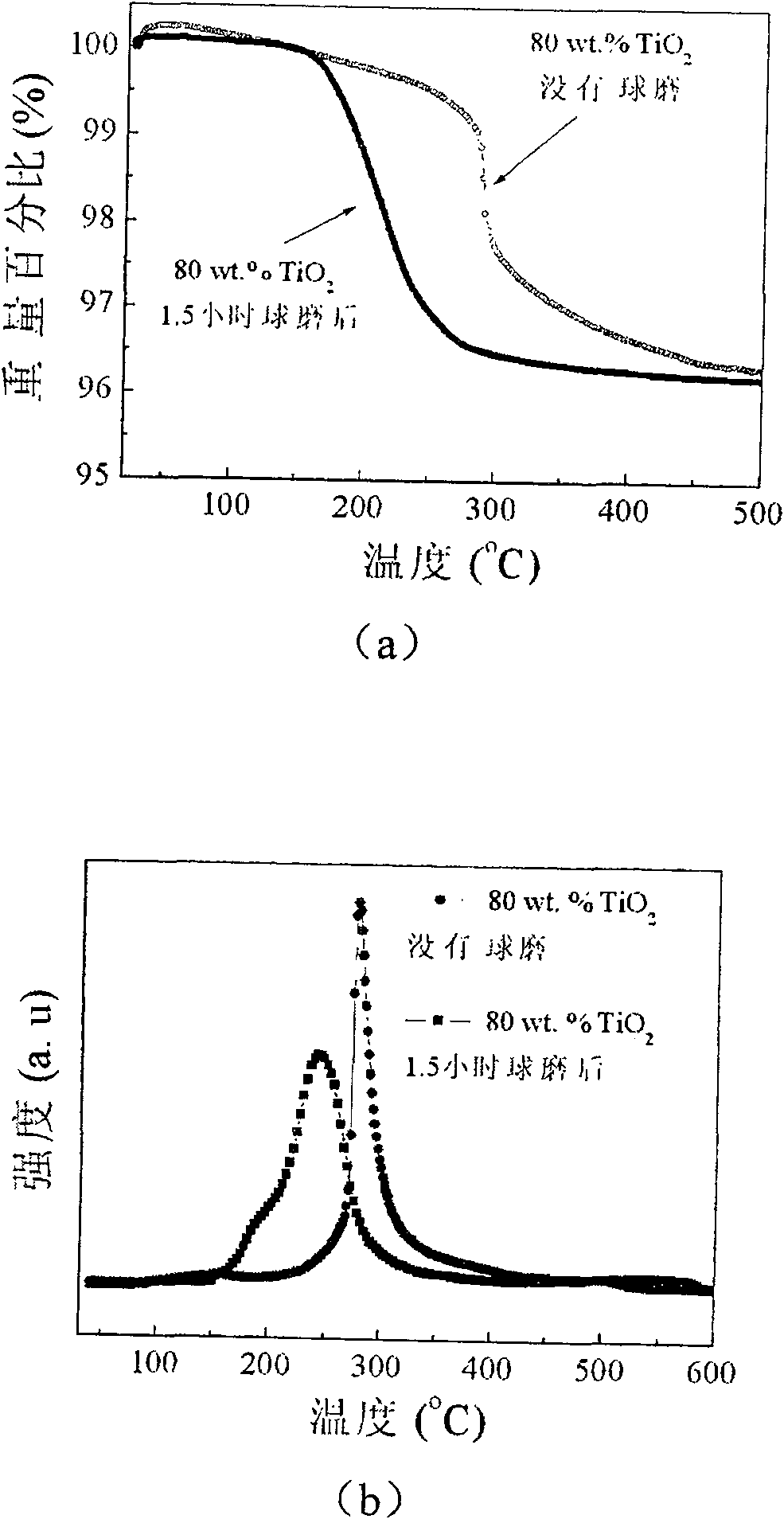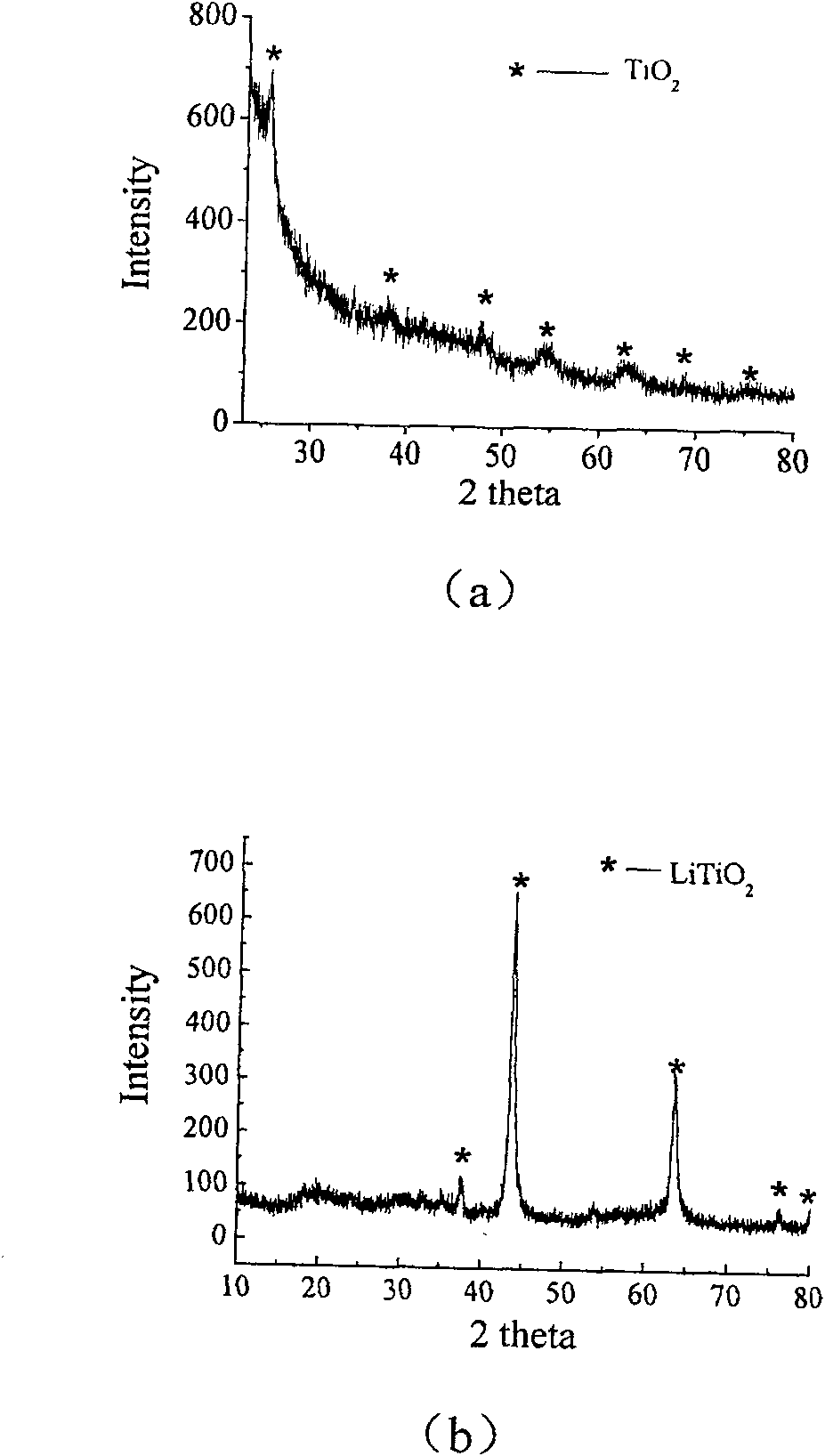Lithium borohydride hydrogen storage material modified by oxide and preparation method thereof
A hydrogen storage material, lithium borohydride technology, applied in the direction of chemical instruments and methods, borane/diborane hydride, other chemical processes, etc., can solve the problems that are difficult to meet the practical application of alloys, and achieve a simple and efficient method. The effect of hydrogen temperature reduction
- Summary
- Abstract
- Description
- Claims
- Application Information
AI Technical Summary
Problems solved by technology
Method used
Image
Examples
Embodiment 1
[0023] LiBH 4 For commercial purchase, TiO 2 Prepared by the sol-gel method (H. Choi, E. Stathatos, D. D. Dionysiou, Applied Catalysis B-Environmental 2006, 63, 60-67.). LiBH 4 And different mass percentages of TiO 2 (20%-80%) After mixing, ball mill for 5 minutes in a stainless steel vessel under the protection of an inert atmosphere. figure 1 LiBH 4 And different TiO 2 Mass spectrometry (a) and thermogravimetric (b) analysis results after mixing. As you can see, after TiO 2 Modified LiBH 4 The hydrogen release temperature is significantly reduced. Further, after being combined with 80wt% TiO 2 After 1.5 hours of ball milling, LiBH 4 The initial hydrogen release temperature is reduced to about 150℃ ( figure 2 ). From the XRD results, you can see the LiBH after dehydrogenation 4 +TiO 2 The reaction produced a new product LiTiO 2 , Lower LiBH 4 The root cause of hydrogen release temperature.
Embodiment 2
[0025] LiBH 4 And ZrO 2 For commercial purchase, TiO 2 , TiO 2 -SiO 2 And Al 2 O 3 -SiO 2 Prepared by sol-gel method. LiBH 4 Mix with 50% different oxides and grind in an agate ware for 5 minutes. Figure 4 The mass spectrometry results of these mixtures. It can be seen that LiBH modified by different oxides 4 The hydrogen release temperature is significantly reduced.
Embodiment 3
[0027] LiBH 4 And Fe 2 O 3 Buy for business. 50wt% LiBH 4 And 50wt% Fe 2 O 3 After mixing, ball milling was performed for different time. Figure 5 It is the mass spectrum analysis result of the mixture of different ball milling time. As you can see, after Fe 2 O 3 Modified LiBH 4 The hydrogen release temperature is significantly reduced. Especially ball milling for 4 hours, 50wt% LiBH at 150℃ 4 +50wt%Fe 2 O 3 The initial hydrogen release temperature of the components is reduced to about 150°C, and most of the hydrogen can be released below 250°C.
PUM
 Login to View More
Login to View More Abstract
Description
Claims
Application Information
 Login to View More
Login to View More - R&D
- Intellectual Property
- Life Sciences
- Materials
- Tech Scout
- Unparalleled Data Quality
- Higher Quality Content
- 60% Fewer Hallucinations
Browse by: Latest US Patents, China's latest patents, Technical Efficacy Thesaurus, Application Domain, Technology Topic, Popular Technical Reports.
© 2025 PatSnap. All rights reserved.Legal|Privacy policy|Modern Slavery Act Transparency Statement|Sitemap|About US| Contact US: help@patsnap.com



